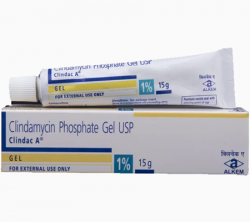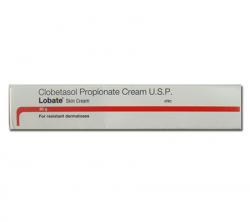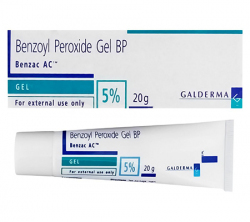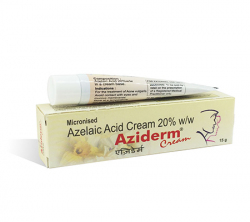Your cart is currently empty!
Clindac-A Gel 1%
Clindac A Gel contains the active ingredient Clindamycin, an antibiotic agent useful for the treatment of the number of bacterial infections. This drug belongs to the class of antibiotics known as lincosamides. By inhibiting bacteria protein synthesis at the ribosomal level (the site of protein synthesis), clindamycin is believed to kill bacteria associated with acne. The […]
Description
Clindac A Gel contains the active ingredient Clindamycin, an antibiotic agent useful for the treatment of the number of bacterial infections. This drug belongs to the class of antibiotics known as lincosamides. By inhibiting bacteria protein synthesis at the ribosomal level (the site of protein synthesis), clindamycin is believed to kill bacteria associated with acne.
The term “acne vulgaris” refers to the more common form of acne, consisting of non-inflammatory and mildly inflammatory lesions. The more severe form of acne is characterized by the presence of nodules. Nearly 17 million people in the United States have acne, making it the most common skin disease. Although acne is not a serious health threat, severe acne can lead to disfiguring, permanent scarring, which can be upsetting for people who suffer from the disorder.
Adverse reactions associated with the use of Clindac A Gel include itching and peeling skin. Cases of diarrhea, bloody diarrhea, and colitis have been reported as adverse reactions in subjects treated with oral and parenteral (intravenous) formulations of clindamycin, and have been reported rarely with topical clindamycin. Abdominal pain and gastrointestinal disturbances, as well as gram-negative folliculitis (bacterial infection and inflammation of hair follicles), have also been reported in association with the use of topical formulations of clindamycin.
Although Clindac A Gel is inactive in vitro, rapid in vitro hydrolysis converts this compound to clindamycin which has antibacterial activity. Clindamycin inhibits bacteria protein synthesis at the ribosomal level by binding to the 50S ribosomal subunit and affecting the process of peptide chain initiation.






Reviews
There are no reviews yet.